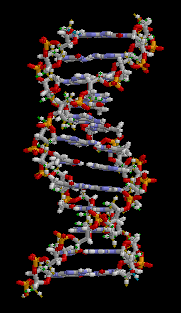
As a science writer, I often find it sobering to read scientific history. Science works slowly, even though we wish it would work in nanosecond breakthroughs.
In 1913, for example, a Russian scientist named Nikolai Anichkov ran an experiment in which he had egg yolks fed to rabbits. On this cholesterol-heavy diet the rabbits developed atherosclerosis. The more cholesterol the rabbits ate, the bigger the deposits on their blood vessels became. It was a tremendous discovery, considered by some one of the greatest in medical history.
But it did not lead overnight to a treatment for heart disease. In fact, it did not even lead, on its own, to a clear understanding of how cholesterol ends up in the blood vessels. Instead, it focused the attention of later scientists on the question of cholesterol. It took many years for scientists to figure out the steps by which enzymes produce cholesterol molecules. Then scientists began searching for drugs that might interfere with those enzymes.
In 1971, six decades after Anichkov ran his egg-yolk experiments, Akira Endo of Tokyo Noko University and his colleagues, decided to see if microbes made natural cholesterol-fighting compounds (free pdf). They reasoned that such a compound would be a potent weapon against microbial competitors, since cholesterol and related molecules are essential for building cells. In 1973 they found a fungus that blocks a key enzyme in the cholesterol pathway. It took more than another decade before drugs based on Endo’s explorations, known as statins, reached the market. Today drugs like Lipitor are prescribed to millions of people.
If a journalist wrote an article on Anchikov’s intial research, the most accurate headline would have been something like: “RUSSIAN SCIENTIST DISCOVERS LINK BETWEEN MOLECULE AND HEART DISEASE. WILL LEAD TO POWERFUL NEW MEDICINE IN EIGHTY YEARS.”
Of course, it would be a rare journalist who would be able to see eighty years in the future like that. And headlines about events readers won’t be alive to see can seem awfully remote. Anchikov’s discovery did not change the lives of the people who could have read about it at the time. Their grandchildren, yes.
I’ve been thinking about Anchikov recently, after having read a letter to the New England Journal of Medicine. It’s by Joel Hirschhorn of Harvard, on the subject of genomes.
A decade ago a complete sequence of the human genome was still a dream, although a dream close to becoming real. In a typical article from 1999, a reporter wrote that “scientists hope to treat diseases in much the same way that software engineers fix faulty computer programs, by isolating flaws in the code.” Once we could read the entire human genome, the article promised, nothing would be the same: “By identifying the genetic roots of illnesses like cancer and heart disease, some experts say, the science of the genome, or genomics, may make it possible for a child born today to live to 150–or, some say, much longer.”
What a difference a decade makes. Scientists have been finding many genetic markers for common diseases like heart disease and diabetes, but they’re not pointing the way to obvious treatments. The falling cost of DNA is letting scientists sequence genomes left and right–not just people’s genomes, but the genomes of their cancer cells and their microbes. And for now, scientists are drowning in data rather than plucking out new cures.
Hirschhorn wants the growing number of skeptics to keep history in mind. In his NEJM letter he writes,
New biologic insights do not guarantee a rapid translation into clinical practice; the latter will require great effort by basic, translational, and clinical researchers. The difficulty in translation is not unique to genetic discoveries: nearly a century and three Nobel Prizes separate the determination of the chemical composition of cholesterol from the development of statins. Each discovery of a biologically relevant locus is a potential first step in a translational journey, and some journeys will be shorter than others. With a more complete collection of relevant genes and pathways, we can hope to shorten the interval between biologic knowledge and improved patient care.
In the next issue of Newsweek, I consider the near-term and the long-term future of genomes. My essay is called “The Gene Puzzle.” Check it out.
Originally published June 28, 2009. Copyright 2009 Carl Zimmer.